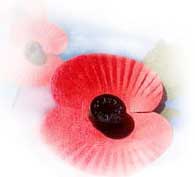

General Haig was born in Edinburgh and educated at Clifton School, Bristol and Brasenose College, Oxford. He then attended the Royal Military College at Sandhurst. Haig entered the army in 1885 as a cavalry officer in the Sudan, he then fought in the Boer War in South Africa from 1899 to 1902. After that, he served under Lord Kitchener in India and from 1905 until 1909 he worked on reformation of the British Army. When the first world war began in 1914, Haig was a Commander of the First Army Corps of the British Expeditionary Force. In 1915, General Haig was promoted to Commander in Chief of the British Expeditionary Force.
General Haig was responsible for sending troops into some of the bloodiest battles that were fought during WWI, in particular, the Battle of the Somme in 1916 and Passchendaele in 1917. Large numbers of troops died or were wounded (60 000 at the Somme on the first day).In 1918, the German offensive had forced the Allied troops back to within 40 miles of Paris and Haig had to devise a plan to reverse this situation. By September 1918, the Germans were retreating again. General Haig masterminded great successes in the 'Hundred Days' of 1918 when the British won a dozen major victories.